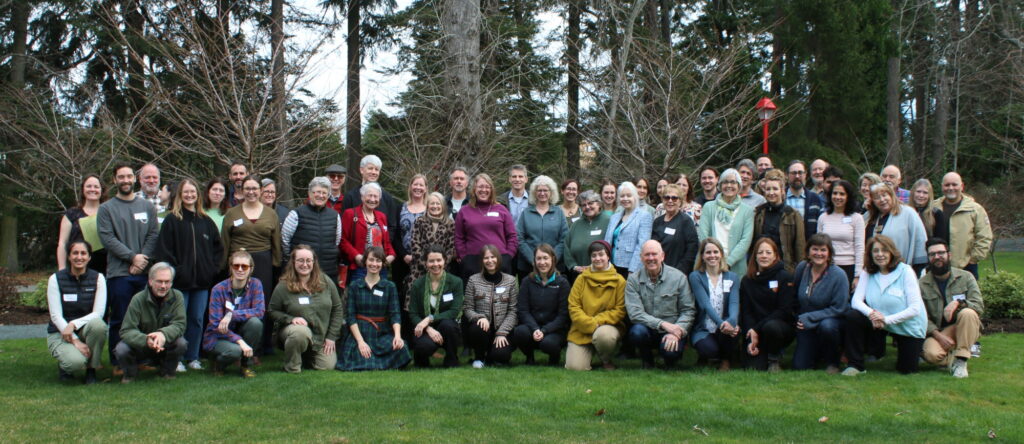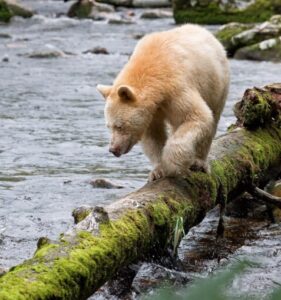Introduction
The Funding our Future workshop, brough together local government and First Nations elected officials and staff, not for profit organisations, funding and financial advisors active within the capital region to talk about how sustainable funding for biodiversity and stewardship could be achieved.
The natural environment within the capital region has supported people for millennia by providing shade, water, food, medicine, and protection from extreme weather events, and it remains one of the main reasons that people continue to move to the area. However, colonisation, climate change, and the increasing urban density has affected the health of these systems, which subsequently affects the health of communities within the region.
In the region First Nations guardian programs, environmental not for profit organisations, and local governments are taking measurable action to improve the health of these ecosystems. However, these programs are not receiving enough funding to be able to prevent biodiversity loss, improve ecosystem resilience and adaptation as landscapes continue to rapidly change. We want to look for solutions.
Territorial Acknowledgement
We would like to acknowledge that this work is focused on an area that is now known as the Capital Regional District which is in the ancestral and unceded territories of the SENĆOŦEN, Malchosen, Lekwungen, Semiahmoo, T’Sou-ke, Hul’qumi’num and Pentl’ach speaking people.
These lands have been managed by Indigenous Peoples for medicine and food for thousands of years, leading to ecosystems with high species diversity and of cultural significance. However, colonisation has resulted in the loss of natural and managed ecosystems through urban development and western agriculture, leaving only remnants of old growth forest and coastal oak and prairie ecosystems (Garry oak).
For the health of these ecosystems to be restored, we need to listen to the Indigenous Peoples who hold the knowledge on how to manage these systems. We are fortunate to have examples of this knowledge being applied, including the Stqeeye’ Learning Society in the P’hwulhp (Garry Oak) Restoration Project – Our Grandmothers’ Garden with? Maiya Modeste ( click here to learn more); and the T’sou-ke Guardians Program who are working to remove invasive species such as green crab and knotweed that are impacting on salmon habitat (click here to learn more).
Objectives of the Workshop
The objectives for the workshop are:
- To reflect on what we value about the natural environment and the services it provides.
- To share information on new ways to finance biodiversity and stewardship that brings external funding to the region.
- To meet others who are involved in stewardship of the region’s natural environment.
- To share and build collaborative opportunities for actions that we can take to increase finance for the natural environment.

Workshop Report

Photo by Tom Whitfield
The workshop report provides a summary of the presentations and conversations through the day, includes examples of conservation financing tools already in use in BC and internationally and provides a list of next steps to be delivered by the Action for Adaptation team (CDFCP and UBC Botanical Garden) and attendees at the workshop with the vision to:
‘Development of a Biodiversity and Land Stewardship Fund that is co-governed by First Nations and local government’.
Workshop Resources

Credit – Coast Funds
The workshop will focus on sustainable funding models that are currently in use in BC, but where applicable will pull on a couple of models from outside the province to show what others are also doing. Resources have been developed to help conversation during the second breakout group which focuses on methods of generating income. This maybe a new area of knowledge for some people attending so these resources have been developed to ensure that everyone can take part in the conversation.
Workshop Presentations
To hear the full recorded presentation, click the recording above. This presents the audio only. Initial background noise disappears after a few seconds.
Belonging: Looking back to build a new relationship with our home – SȾHENEP (Adam Olsen)
The Funding the Future Workshop was held in the territory of the Lekwungen speaking people, specifically the Songhees and Esquimalt First Nations. The territory of the Lekwungen speaking people extends over the area now known as Southern Vancouver Island, Southern Gulf Island and the San Juan Islands. We were reminded by Adam that all these people are interconnected by family, but this community was divided by the federal government into Indian bands and by the colonial administrative system. This is contrary to what Indigenous People are taught. ‘We don’t own this place, we belong to it’, Indigenous Peoples families are woven together by culture, language, resource development and reciprocity. Colonisation disrupted Indigenous Peoples connection to the land. The presentation spoke to the lasting impact on Indigenous communities and ecosystems and explored how balance could be restored with Indigenous-led stewardship and governance leading to a just and sustainable future.
To hear the full recorded presentation, click the recording above.
State of Biodiversity – Cassandra Cummings, Diamond Head Consulting
To enable the District of Saanich to develop their Biodiversity Conservation Strategy, Diamond Head Consulting first completed a State of Biodiversity Report. The report provided a high-level snapshot of the condition and threats to biodiversity in Saanich to establish a baseline condition. The State of Biodiversity Report was subsequently use to set 130 actions in the Biodiversity and Conservation Strategy, which were associated with timelines, financial commitments and anticipated outcome. One of the priority actions is promoting and expanding biodiversity stewardship and education programs and developing incentive programs. Diamond Head Consulting on behalf of the District of Saanich are currently working with the district looking at conservation funding and incentives for private land stewardship programs. The report from this work will be available in spring 2025.
To hear the full recorded presentation, click the recording above. Note first few seconds of the presentations audio is missing.
Local Conservation Funds – Juliet Craig, Kootenay Conservation Program
A Local Conservation Fund is a local government service supported by parcel tax or property value tax that creates a dedicated fund for conservation projects. Kootenay Conservation Program (KCP) formed in 2002 when the area was seeing rapid development, and it was understood that there was a need to support land conservation and stewardship on private lands. The partnership brings together local, provincial and federal governments, non-profit societies, land trusts, First Nations, agricultural producers and educational institutions to work towards the collective purpose to conserve biological diversity in the region. Inspired by this partnership, in 2008 the Regional District of East Kootenay (RDEK) held a referendum to ask constituents if they would be willing to pay tax to contribute to conservation projects, including stewardship and land acquisition. This service, called the Columbia Valley Local Conservation Fund, was originally approved with a 10-year sunset clause. It was supposed to expire in 2018, but RDEK Directors voted to remove the sunset clause altogether and continue the fund indefinitely.
To hear the full recorded presentation, click the recording above.
Building Sustainable Funding – Brodie Guy, Island Coastal Economic Trust
The Island Coastal Economic Trust has a vision to establish the first co-governed regional development organisation in Canada. The trust is governed by locally elected leaders independently from, yet accountable to, the provincial government. So how do you approach developing sustainable funding? You need to consider the combination of social, economic, environmental, cultural and often political conditions and benefits to a project. These need to feed into the business case for the protection of nature and stewardship. The natural environment can be hard to quantify, but this is essential if you are working with investors.
Financing Conservation on Private Lands, Josh O’Neill
The Mustel Group were commissioned by the Coastal Douglas-fir Conservation Partnership (CDFCP) to conduct a survey among residents of the Capital Regional District. The primary purpose of the survey was to identify if people would be willing to pay for a publicly funded conservation fund that supports stewardship on private lands. Initially the survey targeted 500 people across the four main areas of the Capital Region District: Core, Saanich Peninsula, Gulf Islands, and the West Shore, but due to good engagement the final number of people surveyed was 1052.
The survey was designed to measure:
- what residents value most about living in the region,
- what environmental impacts they were most concerned about,
- what level of support they felt landowners should receive for conservation activities,
- who should bear the responsibility of protecting the natural environment of private lands, and
- the publics awareness of organizations that are currently involved in conservation actions.
Acknowledgements
We would like to express our sincere gratitude to all of the speakers and participants of the workshop. We would also like to acknowledge the support that has been provided by our funders.





